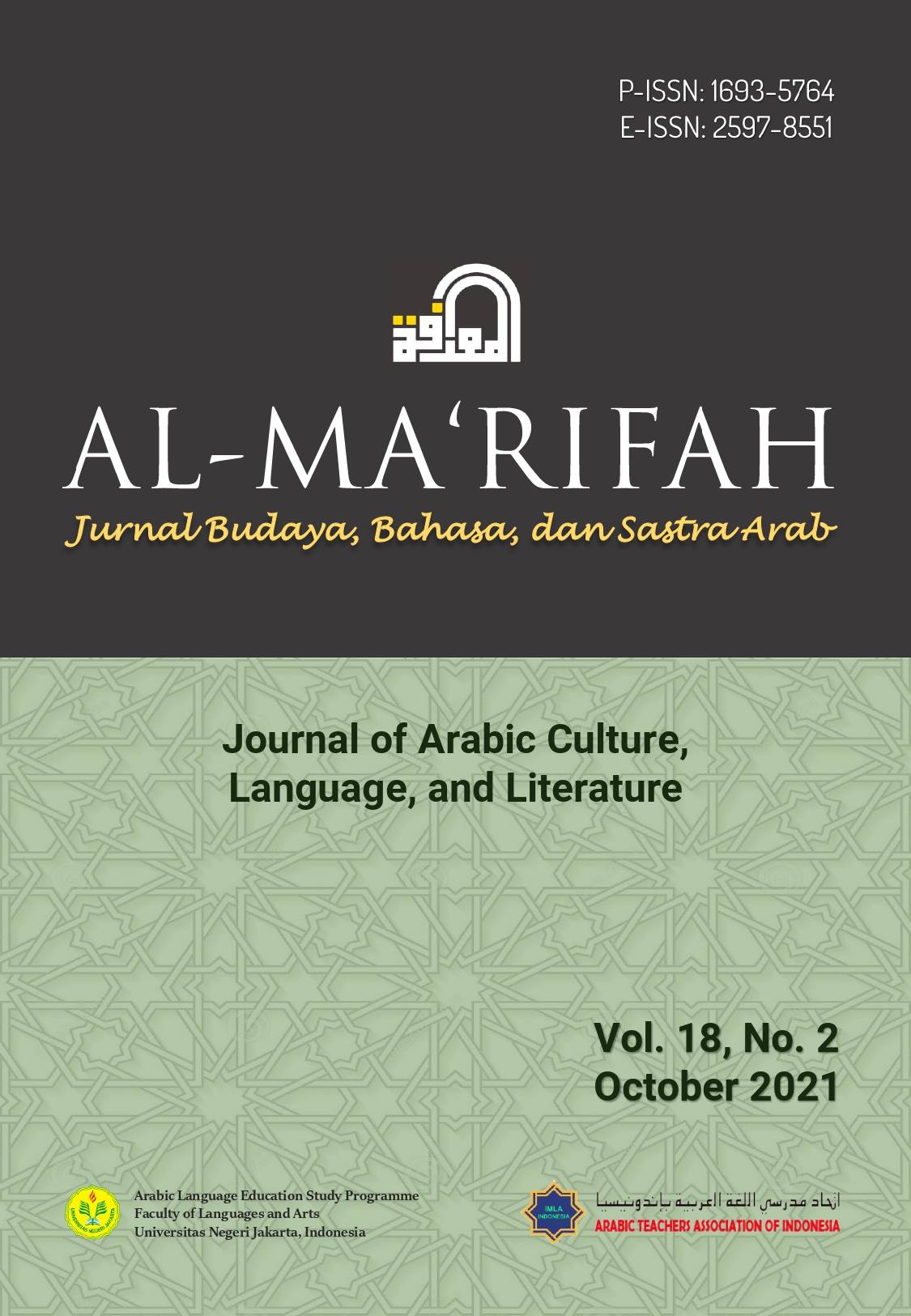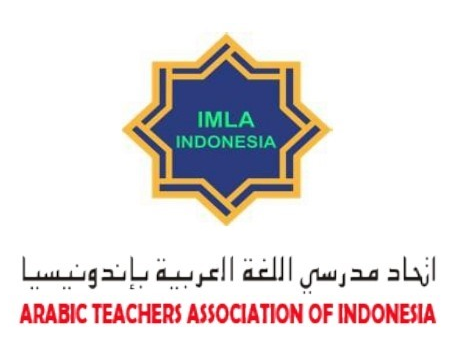Makna Denotasi dan Konotasi dalam Film Animasi Amīrat al-Rūm Karya Hadi Mohammadian: Semiotika Roland Barthes
DOI:
https://doi.org/10.21009/almakrifah.18.02.04Keywords:
Connotation, denotation, icon, meaningAbstract
This article aims to describe the meaning of denotation and connotation in the animated film Amīrat al-Rūm by Hadi Mohammadian using the semiotic theory of Roland Barthes. Barthes explained that in the meaning of the word, there are two parts, denotation, namely the original meaning contained in the dictionary, and connotation, where this meaning involves human emotions and thoughts. This type of research is descriptive qualitative research, and the data source used is the animated film Amīrat al-Rūm by Hadi Mohammadian. The data collection technique uses watching, listening, and translating. Meanwhile, the data analysis is linguistic messages, unencoded iconic messages, and encoded iconic messages. The results of this study indicate that in the animated film Amīrat al-Rūm many dialogues contain denotative and connotative meanings.
References
Azizah, M., & Umami, U. (2020). Makna denotasi dan konotasi dalam album "Tempat Aku Pulang" karya Fiersa Besari berdasarkan perspektif Roland. Retrieved from https://www.scribd.com/document/499724781/Dalalah-22-Nov-revisi
Barthes, R. (1990). Imaji musik teks (A. Hartono, Terj.) . London: Fortana Press.
Daryono, I. A. (2019). Berbahasa Indonesia dengan logis dan gembira. Yogyakarta: Kreasi Wacana.
Djajasudarma, F. (1999). Semantik 2: Pemahaman ilmu makna. Bandung: PT. Refika Aditama.
Munawwir, A. W. (1997). Kamus al-munawwir Arab-Indonesia terlengkap. Surabaya: Pustaka Progressif.
Nöth, W. (1995). Handbook of semiotics. USA: Indiana Universiry Press.
Nurhidayah, D. (2017). Representasi Makna Pesan Sosial Dalam Film Bulan Terbelah Di Langit Eropa. Jurnal Online Kinesik, 4(1), 139–152. Retrieved from https://www.neliti.com/publications/144252/representasi-makna-pesan-sosial-dalam-film-bulan-terbelah-di-langit-amerika
Parera, J. D. (2004). Teori semantik. Jakarta: Erlangga.
Putri, A. P. (2014). Representasi citra perempuan dalam iklan shampoo Tresemme Keratin Smooth di majalah Femina. Dunia Komunikasi: Jurnal Ilmu Komunikasi Universitas Mulawarman, 2, 104–115. Retrieved from https://ejournal.ilkom.fisip-unmul.ac.id/site/?p=1338
Riwu, A., & Pujiati, T. (2018). Analisis semiotika Roland Barthes pada film 3 Dara: Kajian semiotika. Deiksis, 10(3), 212–223. doi:10.30998/deiksis.v10i03.2809
Septiana, R. (2019). Makna denotasi, konotasi, dan mitos dalam film Who Am I Kein System ist Sicher: Suatu analisis semoitik. Jurnal Elektronik Fakultas Ilmu Budaya Universitas Sam Ratulangi, 1(2), 1–13. Retrieved from https://ejournal.unsrat.ac.id/index.php/jefs/article/view/24151
Siswono. (2014). Teori dan praktik diksi, gaya bahasa, dan pencitraan. Yogyakarta: Deepublish.
Subet, M. F., & Daud, M. Z. (2018). Makna denotatif dan konotatif dalam Slanga Pelacur. Maltesas Multi-Disciplinary Research Journal (Mirjo), 3(1), 29–43. Retrieved from https://maltesas.my/msys/explore/detailsg.php?det=29
Tudjuka, N. S. (2019). Makna denotasi dan konotasi pada ungkapan tradisional dalam konteks pernikahan adat suku Pamona. Jurnal Bahasa dan Sastra, 4(1). Retrieved from http://jurnal.untad.ac.id/jurnal/index.php/BDS/article/view/10041
Ulmann, S. (2012). Pengantar semantik. Yogyakarta: Pustaka Pelajar.











